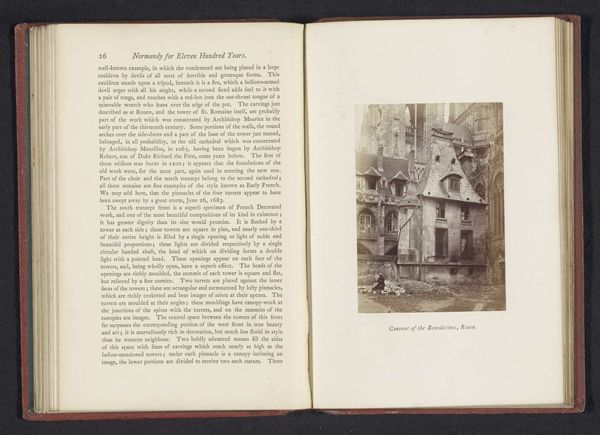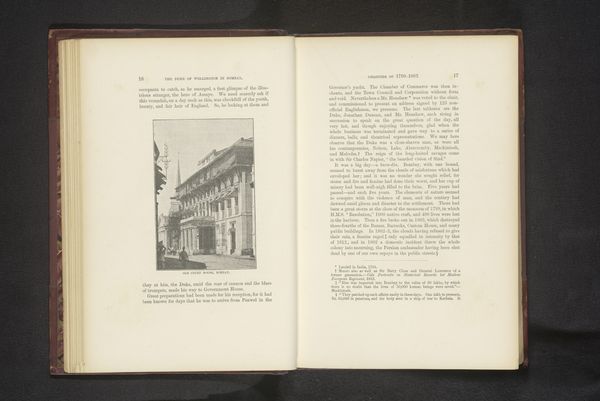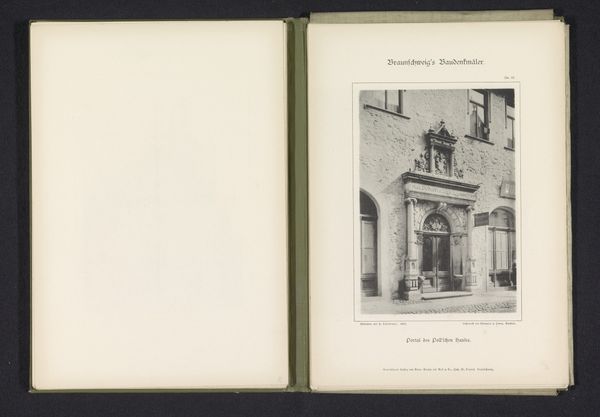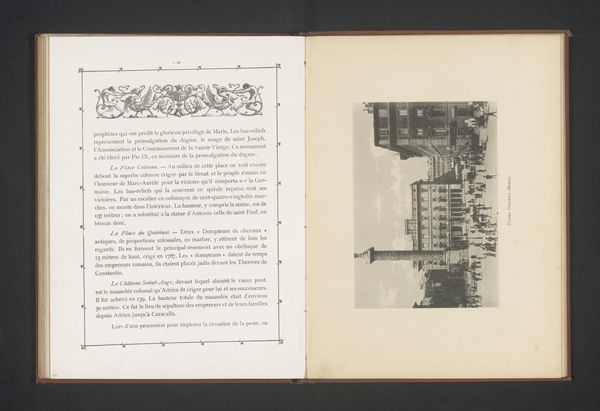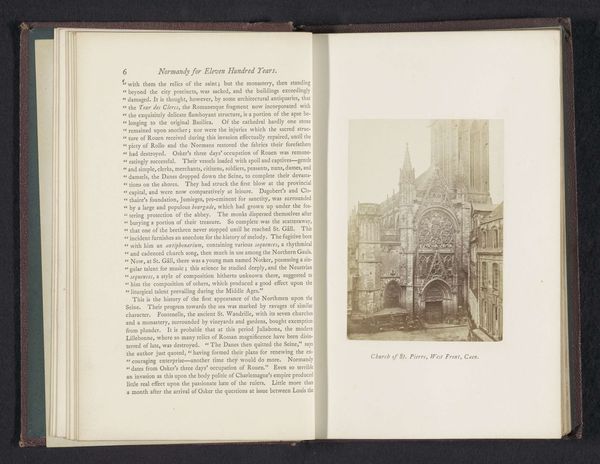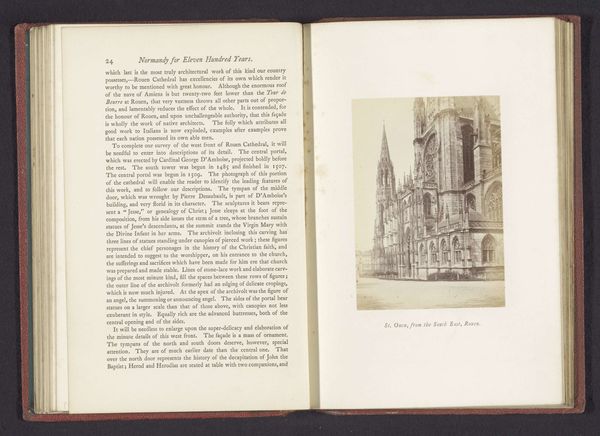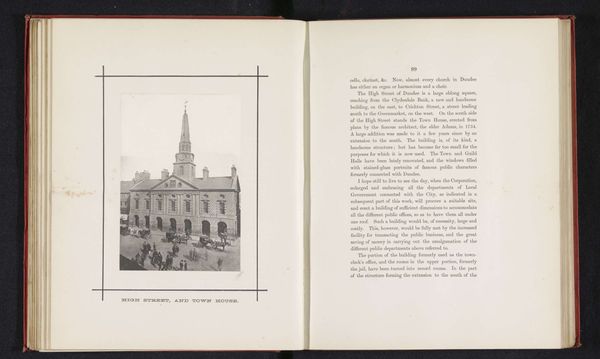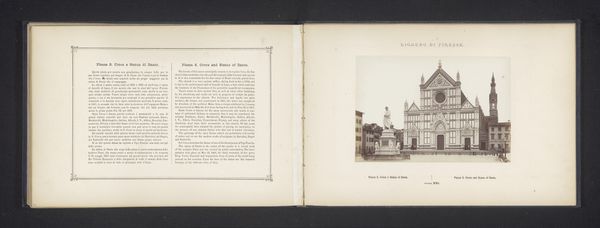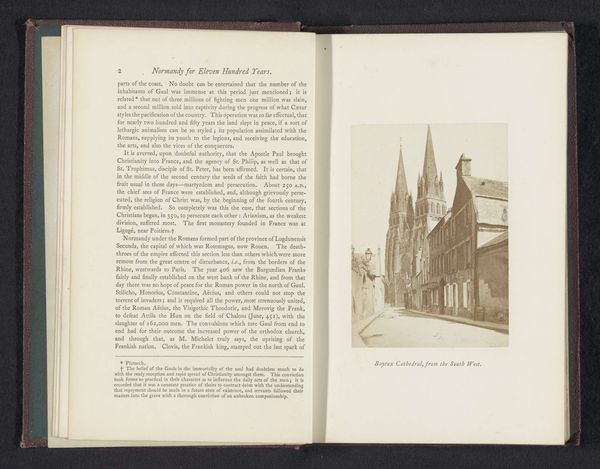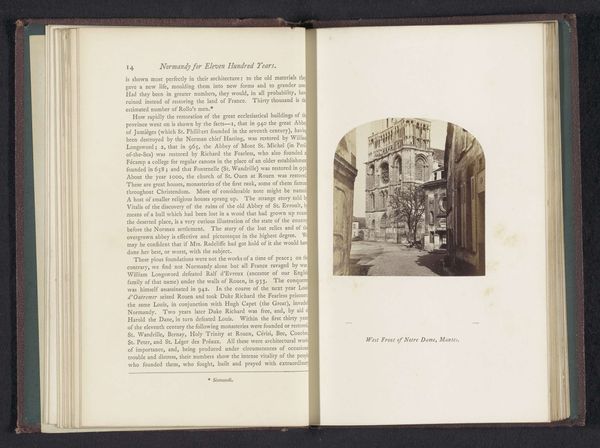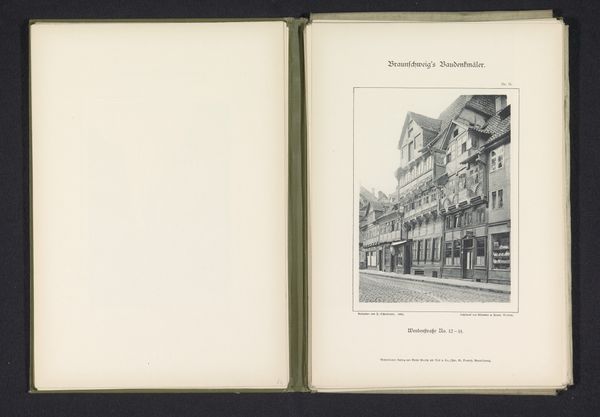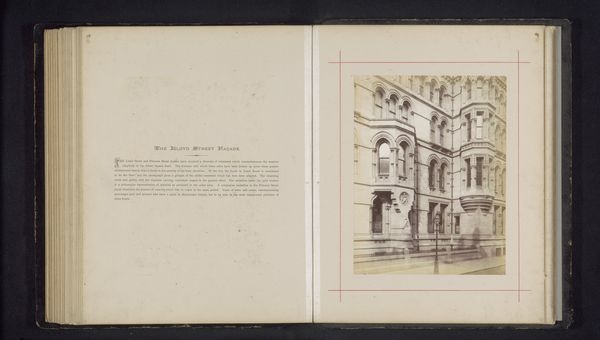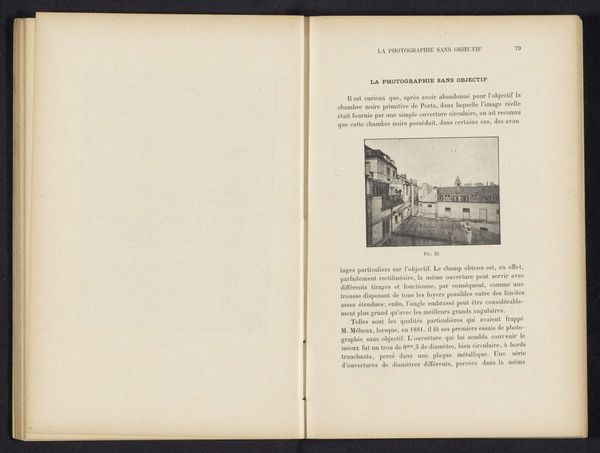
print, photography
# print
#
photography
#
building
Dimensions: height 114 mm, width 80 mm
Copyright: Rijks Museum: Open Domain
Curator: Oh, isn’t this just mesmerizing? It’s a photographic print of the Palais de Justice in Rouen. Editor: It's arresting—sort of spectral. Like a gothic fever dream rendered in sepia tones. What process do you suppose they used to achieve this ghostly aesthetic? Curator: This image, created before 1865 by Joseph Cundall, utilizes, as you can see, early photography. Cundall would have been exploring ways to translate the textures and scale of such immense buildings. Editor: It’s also about framing power and justice, quite literally. I’m drawn to how the details in the stonework, so precisely rendered, suggest an army of unseen hands—stonemasons, laborers—each contributing to this monumental symbol. You feel the weight of labor. Curator: Yes, you can almost feel the weight and importance imbued in this magnificent structure. The artist captured the majesty of its elaborate gothic facade in painstaking detail. Look at those intricate carvings, those pinnacles reaching for the sky! There's a palpable sense of awe. Editor: But consider the social underpinnings, right? Who has access to this kind of grandeur, this kind of justice? The materials—stone, glass—were certainly extracted and formed by particular hands, at particular costs. This wasn’t conjured from thin air. Curator: You’re right, there's a complexity here beyond just aesthetics. I mean, consider how this Palais de Justice, in its physical form and representation, reinforces social structures and legal authority. But to me, the romantic quality transcends even those readings. The way the light filters through, almost obscuring its sharp angles… it gives it a sort of… vulnerability. Editor: Vulnerability masked by power, maybe? The architecture insists on permanence and justice, but the ephemeral nature of photography betrays a fragility. Prints fade, buildings crumble, legal systems evolve…it's all subject to entropy. Curator: I find that such a lovely intersection; perhaps that’s what draws me in—this dialogue between power and temporality caught in a single image. Editor: Indeed. The image becomes an artifact not just of architecture, but of labor, material conditions, and fleeting moments. Fascinating how a still photograph, supposedly objective, is rife with subjectivity and implications.
Comments
No comments
Be the first to comment and join the conversation on the ultimate creative platform.
